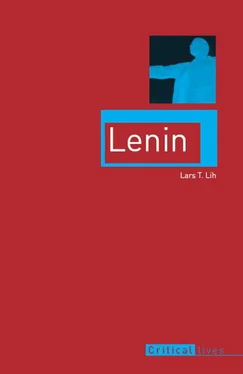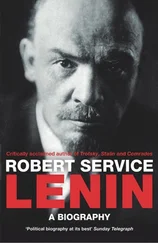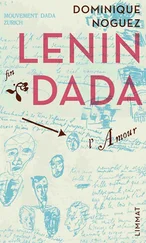Lars Lih - Lenin
Здесь есть возможность читать онлайн «Lars Lih - Lenin» весь текст электронной книги совершенно бесплатно (целиком полную версию без сокращений). В некоторых случаях можно слушать аудио, скачать через торрент в формате fb2 и присутствует краткое содержание. Город: London, Год выпуска: 2012, ISBN: 2012, Издательство: Reaktion Books, Жанр: Биографии и Мемуары, История, на английском языке. Описание произведения, (предисловие) а так же отзывы посетителей доступны на портале библиотеки ЛибКат.
- Название:Lenin
- Автор:
- Издательство:Reaktion Books
- Жанр:
- Год:2012
- Город:London
- ISBN:9781780230030
- Рейтинг книги:3 / 5. Голосов: 1
-
Избранное:Добавить в избранное
- Отзывы:
-
Ваша оценка:
- 60
- 1
- 2
- 3
- 4
- 5
Lenin: краткое содержание, описание и аннотация
Предлагаем к чтению аннотацию, описание, краткое содержание или предисловие (зависит от того, что написал сам автор книги «Lenin»). Если вы не нашли необходимую информацию о книге — напишите в комментариях, мы постараемся отыскать её.
Lenin — читать онлайн бесплатно полную книгу (весь текст) целиком
Ниже представлен текст книги, разбитый по страницам. Система сохранения места последней прочитанной страницы, позволяет с удобством читать онлайн бесплатно книгу «Lenin», без необходимости каждый раз заново искать на чём Вы остановились. Поставьте закладку, и сможете в любой момент перейти на страницу, на которой закончили чтение.
Интервал:
Закладка:
The official slogans of Bolshevism used learned foreign-sounding phrases such as ‘hegemony of the proletariat’ and ‘revolutionary democratic dictatorship of the workers and peasants’. But the inner meaning of these phrases is profoundly Russian and arises from an interpretation of the revolutions of 1905–7 in terms of Lenin’s heroic scenario. Even Bolsheviks who otherwise were opponents of Lenin subscribed to this core platform.
Lenin’s political life during the whole decade was therefore a fight for the meaning of the revolution of 1905–7. A review of the events of these tumultuous years is essential background for Lenin’s personal biography.
The Revolution of 1905–7
The immediate background to the revolution was the shock administered to Russian society by international competition at its most unforgiving. War with Japan began with a Japanese attack on Russian forces on 8 February 1904. Historians have recently suggested that this overlooked conflict should really be called World War Zero, the first of the global conflicts that defined the twentieth century. 2As Russia’s military lurched from disaster to disaster, Russian society – never terribly enthusiastic about the war to begin with – moved toward revolutionary disaffection.
Against the background of growing military defeat the powerful tsarist government began to look shaky and unsure. On 28 July 1904 the widely hated Minister of the Interior Vyacheslav von Plehve was assassinated by Socialist Revolutionary terrorists. The government responded, not in its usual manner of clamping down, but by offering concessions to public opinion. Liberal forces in elite society took advantage of the new atmosphere by unleashing a ‘banquet campaign’ in autumn 1904 which featured respectable pillars of society offering toasts that turned into subversive speeches.
The event that really sparked off the revolution of 1905, from the Social Democratic point of view, was Bloody Sunday (9 January 1905), when the tsarist government, in its ineffable wisdom, chose to open fire on a peaceful crowd that wanted to present a petition to the tsar asking for basic freedoms. The resulting massacre did more to confirm the Social Democratic message than years of propaganda. In the months that followed events in Russia moved closer to a revolutionary explosion.
The rhythm of the revolution waxed and waned over the spring and summer of 1905 but the climax came with the massive events of October 1905, when a strike started by railwaymen became a general one. Russian society was shut down and the government, panicky and isolated, responded by issuing the Manifesto of 17 October, in which the tsar graciously conceded basic political freedoms to his subjects. The final months of 1905 became known as the ‘days of freedom’, since political activity was for a short while unrestricted by police or censor.
After the October Manifesto the question confronting the revolutionary forces was: do we now turn our attention to protecting and using what we have achieved, or do we press on ‘to the end’? The answer of the more impatient revolutionary elements came in the form of the Moscow uprising of December 1905, when the Moscow workers mounted an ‘armed insurrection’ that managed to hold out for a week of heavy fighting. The Moscow uprising was the last of the classic nineteenth-century barricade struggles between elite and people, but one that was fought with a new twentieth-century intensity. Barricades were put up, but the insurgents mainly resorted to guerrilla warfare – hit and run attacks that relied on the sympathy of the city population (not just the workers) for support and cover. In response the government trained artillery fire on the city as a whole. The leadership for the uprising came from the Moscow Bolshevik committee, although the Mensheviks and the Socialist Revolutionaries had participated enthusiastically.
The ultimate defeat of the Moscow uprising was one of the many signs that the tide of revolution had begun to ebb. The St Petersburg Soviet – a class-based elective ‘council’ that was a prototype for ‘soviet power’ in 1917 – was disbanded, and its leadership (including Lev Trotsky) arrested. Although peasant rebellions were still going strong in 1906, the punitive expeditions of the government were already beginning to quell peasant disorders. The government acted on its promise to create an elective legislature or Duma, but it refused to work with the liberal and peasant parties that made up the Duma majority. It therefore closed down the first Duma (elected in March 1906) and then the second Duma (elected in early 1907). Only in June 1907 was a new, highly restrictive electoral law imposed, allowing the government to get a Duma with which it could work.

The new electoral law in 1907 was imposed by an unconstitutional coup carried out by the newly appointed minister Petr Stolypin. Stolypin was the outstanding figure of the new post-revolutionary regime, representing both its repressive face (the nooses that were used to hang peasant rebels were called ‘Stolypin neckties’) and its reformist face (the ‘Stolypin land reform’ was aimed at transforming property relations in peasant agriculture).
By the end of 1907 the revolution was over and the ‘Stolypin era’ in full swing, but the passions of the revolutionary era still informed Russian political debate. What were the successes of the revolution? What were its failures? Could a second edition be expected any time soon? If so, how to prepare for it? If not, how to adjust to the new post-revolutionary context? Bolshevism was defined by its answers to questions like these.
Lenin and the Revolution
At the beginning of 1904, when we last saw Lenin, he was living in Geneva and more politically isolated than he would ever be again. After resigning from the Iskra editorial board in late 1903, he had no journalistic outlet in which to make his case – a situation that was never to recur – and was barely hanging on to any official position in the Russian Social Democratic party. Perhaps his career as a leader was over. Grigory Zinoviev later recalled how the older leader Georgy Plekhanov frightened young Social Democratic émigrés such as himself who were leaning toward Lenin:
You follow him, but in a couple of weeks the line he is now carrying out will make him good for nothing but to scare crows in gardens. Lenin picked up the banner of struggle against me, Plekhanov, against Zasulich, Deutsch. Do you really not understand that this is an unequal struggle? Lenin is finished. From the moment he broke with us, the elders, the founders of the Liberation of Labour group, his song was sung. 3
But Lenin was not as isolated as he seemed to the émigré community in Switzerland. Many of those actually running the party in Russia saw Lenin as their spokesperson and could not understand why he was no longer in the party leadership. Bolshevism as an organized faction within the Russian Social Democratic party arose in the first place through Lenin’s efforts to mobilize this support. Nevertheless, we should not give too much weight to the various accusations and counteraccusations that accompanied the growing split between the Bolsheviks and the Mensheviks in 1903–4. Pavel Axelrod, leader of the Mensheviks in 1904, did not accuse Lenin of any ideological heresy. Rather (as he wrote to Kautsky trying to explain the Lenin phenomenon), Lenin was just a troublemaker who unfortunately was the ‘idol’ of the underground praktiki in Russia. For his part, Lenin later stressed that Bolshevism acquired its real content during the 1905 revolution. 4
Читать дальшеИнтервал:
Закладка:
Похожие книги на «Lenin»
Представляем Вашему вниманию похожие книги на «Lenin» списком для выбора. Мы отобрали схожую по названию и смыслу литературу в надежде предоставить читателям больше вариантов отыскать новые, интересные, ещё непрочитанные произведения.
Обсуждение, отзывы о книге «Lenin» и просто собственные мнения читателей. Оставьте ваши комментарии, напишите, что Вы думаете о произведении, его смысле или главных героях. Укажите что конкретно понравилось, а что нет, и почему Вы так считаете.












